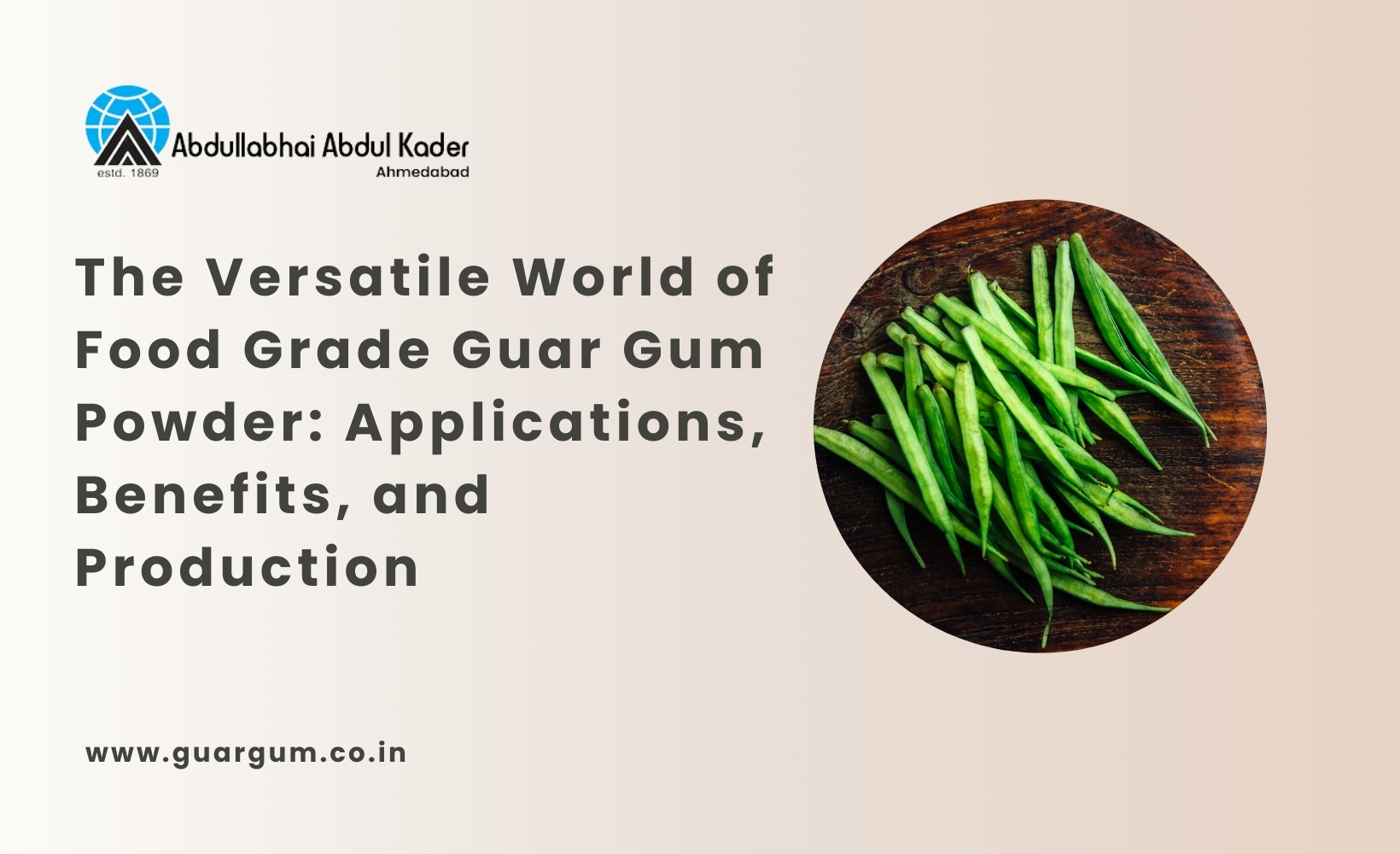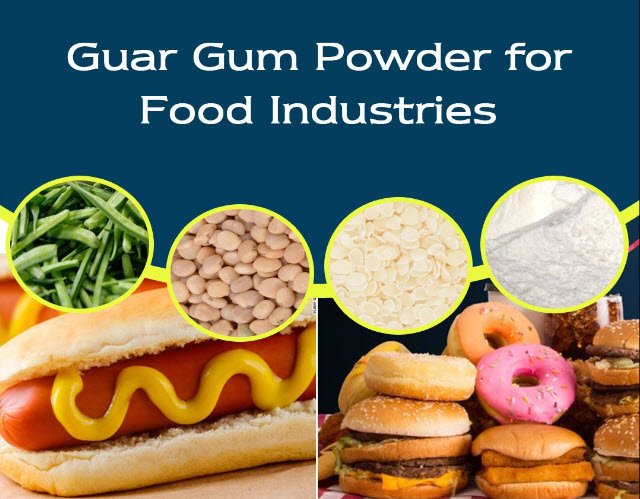
Introduction to Food Grade Guar Gum Powder
Food grade guar gum powder is a natural thickening and stabilizing agent derived from the seeds of the guar plant. It is a crucial ingredient used across various food and beverage products due to its excellent water-binding capacity, emulsification properties, and cost-effectiveness. As consumers and industries alike push for more natural and sustainable ingredients, food grade guar gum has emerged as an essential component in the global food supply chain. This article will explore its applications, benefits, production processes, and why it has become indispensable in food manufacturing.
What is Food Grade Guar Gum Powder?
Food grade guar gum powder is a refined form of guar gum specifically processed for use in edible products. It meets stringent safety and quality standards, making it suitable for food applications without any health concerns. The powder has a neutral taste and a creamy texture, making it ideal for various culinary uses.
- Composition: The main component of guar gum is galactomannan, a polysaccharide that provides high viscosity even at low concentrations.
- Physical Properties: It is off-white to pale yellow in color and is available in various granule sizes, depending on the required application.
How is Food Grade Guar Gum Powder Produced?
The manufacturing process of food grade guar gum powder involves several meticulous steps to ensure purity and effectiveness.
1. Harvesting and Seed Cleaning
- The process begins with the harvesting of mature guar beans, which are cleaned to remove impurities like dust, stones, and plant residues.
- Proper cleaning ensures that the raw material is suitable for further processing.
2. Dehusking and Splitting
- The guar seeds are dehusked to remove the outer shell and then split to separate the endosperm (the source of guar gum) from the germ.
- The endosperm is then refined further to increase the purity of the gum.
3. Grinding and Pulverizing
- The refined endosperm is ground into a fine powder, producing food grade guar gum. Advanced grinding techniques ensure consistent particle size and high-quality texture.
- The powder is then sieved to ensure uniformity and prevent clumping.
4. Quality Control and Packaging

- Rigorous quality control checks are performed, including microbial testing, viscosity measurement, and purity analysis.
- The final product is hygienically packed in food-safe packaging materials to maintain its freshness and quality.
Key Applications of Food Grade Guar Gum Powder
Food grade guar gum powder is highly valued for its multifunctional properties, making it a staple in many food and beverage applications. Here's a look at its widespread use:
1. Dairy Products
- Ice Cream and Frozen Desserts: Guar gum acts as a stabilizer, preventing ice crystal formation and giving ice cream a smooth, creamy texture.
- Yogurt: It enhances the consistency of yogurt, making it thicker and more palatable.
2. Baked Goods
- In baking, guar gum improves the texture and shelf life of bread, cakes, and pastries. It traps moisture, preventing the baked items from becoming stale.
- It also serves as a gluten substitute in gluten-free baking, helping to bind the ingredients and create a chewy texture similar to traditional wheat-based products.
3. Sauces and Dressings
- Guar gum powder is used in sauces, gravies, and salad dressings to provide a uniform, thick consistency. It prevents the separation of oil and water, ensuring a smooth texture.
- Because of its cold-soluble nature, it is especially useful in products that require instant thickening.
4. Beverages
- In beverages, guar gum acts as a stabilizing agent, improving the texture and preventing sedimentation in fruit juices, smoothies, and flavored drinks.
- It is also used in low-calorie drinks to give a fuller mouthfeel without adding calories.
5. Processed Foods
- Soups and Canned Goods: Guar gum powder enhances the viscosity of soups and canned products, providing a hearty, thick texture.
- Ready-to-Eat Meals: It is used in ready meals to maintain consistency during storage and heating.
Benefits of Using Food Grade Guar Gum Powder in the Food Industry
The popularity of food grade guar gum powder is attributed to its numerous benefits, both for food manufacturers and consumers. Let’s delve into these advantages:
1. Excellent Thickening Agent
- Guar gum is one of the most effective natural thickening agents, requiring only a small amount to achieve the desired viscosity. This makes it cost-efficient for large-scale food production.
2. Natural and Plant-Based
- Derived from guar beans, it is a natural, plant-based ingredient, appealing to consumers who prefer clean-label and vegan products.
- It is free from GMOs and gluten, making it suitable for people with dietary restrictions.
3. Improves Texture and Mouthfeel
- The ability of guar gum to bind water and form a gel-like consistency improves the texture and mouthfeel of various food products.
- It gives low-fat or calorie-reduced products a rich and creamy texture, compensating for the absence of fats.
4. Stabilizes and Extends Shelf Life
- By preventing the separation of ingredients, guar gum helps stabilize emulsions and suspensions, extending the shelf life of food products.
- It also acts as a moisture-retainer, keeping baked goods and processed foods fresher for longer.
Comparing Food Grade Guar Gum with Other Thickeners
Food grade guar gum powder often competes with other thickeners like xanthan gum, carrageenan, and cornstarch. Here’s a quick comparison:
- Viscosity: Guar gum provides high viscosity at lower concentrations compared to cornstarch, making it more efficient.
- Cost-Effectiveness: It is more affordable than some other natural thickeners like xanthan gum, making it a popular choice in cost-sensitive markets.
- Temperature Sensitivity: Guar gum is cold-soluble, meaning it can thicken liquids without needing heat, unlike cornstarch, which requires cooking.
Regulatory and Safety Aspects
The safety of food grade guar gum powder has been well-documented by food safety authorities worldwide, including the FDA and EFSA. It is considered safe for human consumption when used in appropriate quantities.
- Labeling Requirements: In packaged food products, guar gum must be listed as an ingredient, typically under the E-number E412.
- Allergen-Free: Guar gum is free from common allergens, making it suitable for hypoallergenic diets.
The Role of Food Grade Guar Gum in Modern Food Trends
As food trends evolve, the use of natural and clean-label ingredients is on the rise. Food grade guar gum powder fits perfectly into this trend, given its versatility and natural origin.
- Clean Label Movement: Consumers are increasingly wary of artificial additives, and guar gum, being a natural product, is preferred for its transparency and safety.
- Plant-Based Diets: With the shift towards plant-based and vegan diets, guar gum is essential in formulating dairy-free and meat-free alternatives.
- Health-Conscious Products: Low-calorie and low-fat food products use guar gum to enhance texture without adding extra calories or fat.
Challenges in Using Food Grade Guar Gum Powder
Despite its numerous advantages, there are some challenges that manufacturers face when using guar gum powder:
- Hydration Issues: Guar gum can form clumps if not properly hydrated, making it essential to disperse it evenly in liquids.
- Overuse Consequences: Using too much guar gum can lead to an overly thick or slimy texture, negatively affecting the product's appeal.
Conclusion
Food grade guar gum powder has revolutionized the food industry with its multifunctional benefits. From thickening and stabilizing to enhancing texture and shelf life, it is a key ingredient in countless food products. As the demand for natural, clean-label solutions continues to grow, the importance of food grade guar gum powder will only increase, solidifying its position as a staple in modern food manufacturing.



